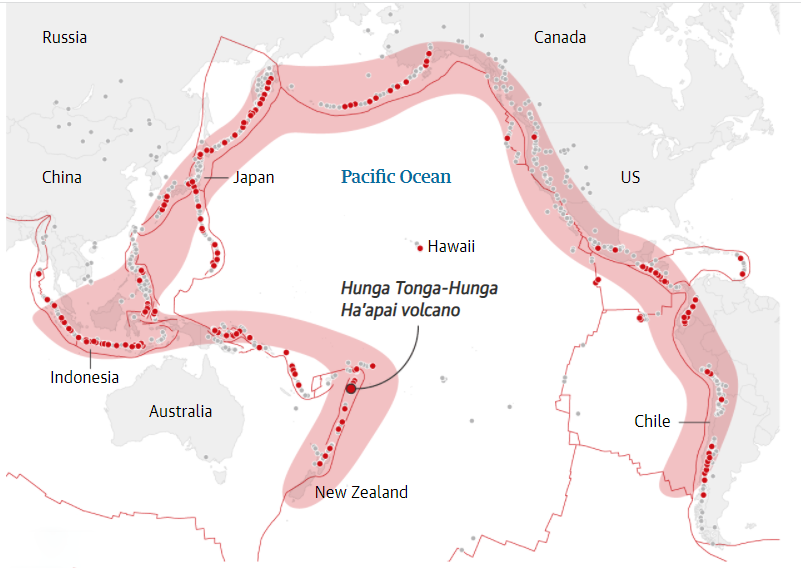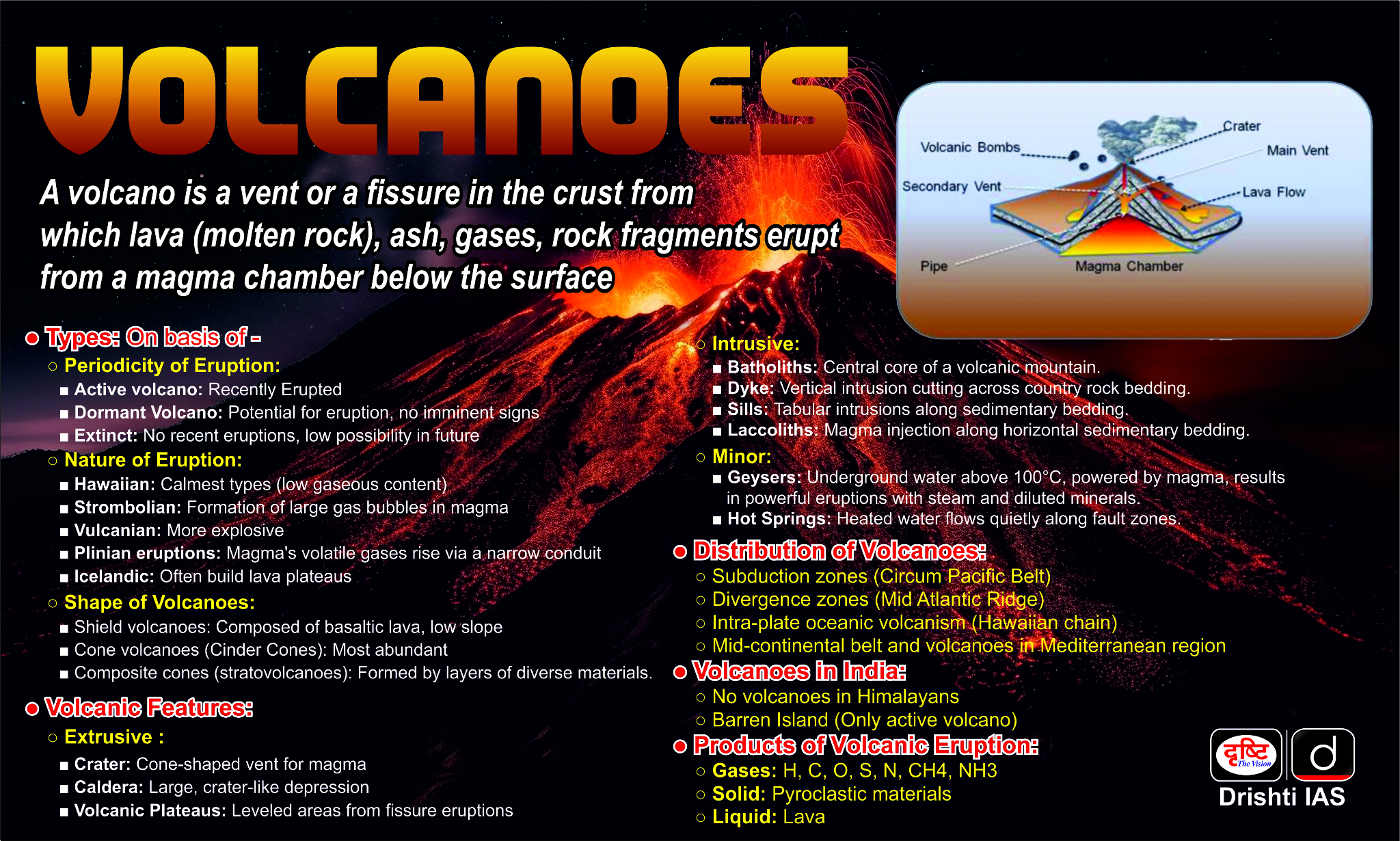Important Facts For Prelims
Volcanic Eruption and Ionospheric Disturbances
- 22 Oct 2024
- 5 min read
Why in News?
Recently, a new study revealed a connection between the Tonga volcano eruption and the formation of Equatorial Plasma Bubbles (EPBs) over the Indian subcontinent.
- Tonga volcano is a submarine volcano in the South Pacific Ocean.
What are the Key Highlights of the Study?
- Volcanic Eruption and Space Weather: The Tonga eruption triggered ionospheric disturbances, contributing to space weather events that affect satellite signals.
- Atmospheric Gravity Waves: The eruption produced strong atmospheric gravity waves that propagated into the upper atmosphere triggering favourable ionospheric conditions for the formation of EPBs.
- Atmospheric gravity waves form when buoyancy pushes air upward, and gravity pulls it back down.
- Plasma Instabilities: Plasma blobs, an increase in the ionospheric eastward electric field at dusk were detected, indicating further ionospheric disturbances due to the eruption.
What are Key Points about Equatorial Plasma Bubbles (EPBs)?
- About EPBs: EPBs are ionospheric phenomena that are generated through plasma instabilities, particularly in the equatorial ionosphere.
- EPBs are regions of depleted plasma in the ionosphere that form near the magnetic equator during post-sunset hours.
- EPBs originate in the equatorial ionosphere but can extend, affecting the global ionosphere 15° North and South of the Earth's equator.
- Impact on Radio Wave Propagation: As radio waves propagate through the ionosphere, irregularities associated with EPBs can scatter them, leading to signal degradation.
- It is a major concern for communication systems that rely on high-frequency radio waves, such as satellite communications and GPS.
- Seasonal and Regional Variability: EPBs are most frequent during the Winter solstice (21st or 22nd December) and least frequent during the Summer solstice (21st June).
What are Key Facts About the Tonga Volcano?
- Location: It is located in the western South Pacific Ocean, west of the main inhabited islands in the Kingdom of Tonga.
- Geology: It is one of 12 confirmed submarine volcanoes along the Tofua Arc, a segment of the larger Tonga-Kermadec volcanic arc.
- The Tonga-Kermadec arc formed as a result of subduction of the Pacific Plate beneath the Indo-Australian Plate.
- It is a part of the Ring of Fire.
- Submarine Volcano: It is an undersea Volcano consisting of two small uninhabited islands, Hunga-Ha’apai and Hunga-Tonga.
Ionosphere
- It is not a distinct layer like the Troposphere or Stratosphere. Instead, the ionosphere overlaps the mesosphere, thermosphere, and exosphere.
- It’s a very active part of the atmosphere, and it grows and shrinks depending on the energy it absorbs from the sun.
- It is an electrically conducting region capable of reflecting radio signals back to Earth.
- The electrically charged atoms and molecules that are formed in this way are called ions, giving the ionosphere its name.
Read More: Tonga Volcano Impacting Weather
UPSC Civil Services Examination, Previous Year Question (PYQ)
Prelims
Q.Consider the following statements: (2018)
- The Barren Island volcano is an active volcano located in the Indian territory.
- Barren Island lies about 140 km east of Great Nicobar.
- The last time the Barren Island volcano erupted was in 1991 and it has remained inactive since then.
Which of the statements given above is/are correct?
(a) 1 only
(b) 2 and 3
(c) 3 only
(d) 1 and 3
Ans: (a)
Q.Consider the following: (2013)
- Electromagnetic radiation
- Geothermal energy
- Gravitational force
- Plate movements
- Rotation of the earth
- Revolution of the earth
Which of the above are responsible for bringing dynamic changes on the surface of the earth?
(a) 1, 2, 3 and 4 only
(b) 1, 3, 5 and 6 only
(c) 2, 4, 5 and 6 only
(d) 1, 2, 3, 4, 5 and 6
Ans: (d)






